Google Pixel Parts
Series Pixel
Series Fold
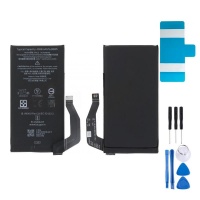
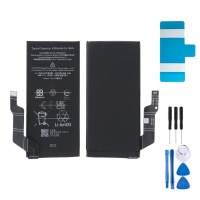
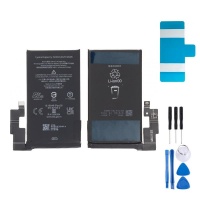
Receive it on wednesday 17 de december

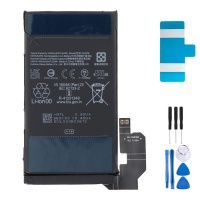

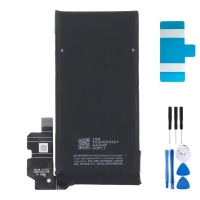
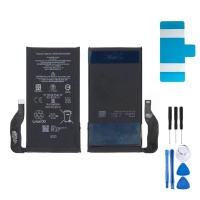
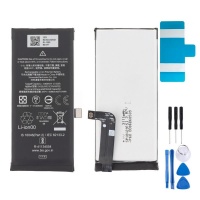





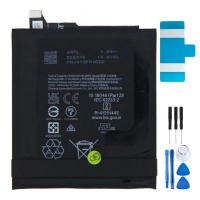


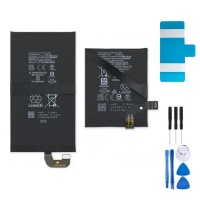
- Give Your Google Pixel a New Lease of Life! Complete Guide to Spare Parts at iLevante.com 📱✨
- Get to Know Your Google Pixel: Popular Models and Their Key Features
- Technical Features Relevant for Repairs
- Common Google Pixel Problems: Why Do You Need Spare Parts?
- Screen Replacements for Google Pixel: Options and Quality
- Understanding Pixel Screen Technology
- Types of Replacement Screens Available
- Batteries for Google Pixel: Keep Your Mobile Powered On
- Types of Replacement Batteries
- Specific Battery Models
- Beyond Screens and Batteries: Other Spare Parts for Your Pixel
- Hardware Fault or Software Trickery? Basic Diagnosis
- Common Software Issues That Look Like Physical Faults
- Basic Diagnosis (Technical Perspective)
- Get Your Hands Dirty! Basic Guide to Repairing Your Google Pixel
- Tools You Will Need 🛠️
- General Steps for Common Repairs
- The Importance of Specific Guides (iFixit and Official)
- Find Your Google Pixel Spare Parts at iLevante.com
Give Your Google Pixel a New Lease of Life! Complete Guide to Spare Parts at iLevante.com 📱✨
Google Pixel mobile phones have earned a special place in the hearts of many users. Known for their exceptional cameras, pure and fluid Android experience, and careful design, they offer very high overall satisfaction. However, like any electronic device we use daily, they are not immune to accidents or natural wear and tear. An unfortunate drop, an unexpected dip, or simply the passage of time can mean you need to look for spare parts for your beloved Pixel.
But don't worry! Repairing your Google Pixel is a fantastic option, more economical and sustainable than buying a new one. At iLevante.com, we are your perfect allies in this mission. We offer a wide range of high-quality spare parts so you can restore your Pixel to its former glory.
In this article, we will guide you through the world of Google Pixel spare parts. We will explore the different models, the most common problems leading to a repair, the types of parts you might need (with special attention to screens and batteries), how to distinguish between a hardware and software fault, and we will give you some basic notions to encourage you to carry out some repairs yourself. Let's get started!
Get to Know Your Google Pixel: Popular Models and Their Key Features
Google has diversified its range of Pixel mobile phones over the years, creating a family that adapts to different needs and budgets. Understanding the different series will help you better identify your device and its potential repair needs.
- Standard Pixel (e.g., Pixel 9, Pixel 8, Pixel 7): These are the heart of the range, the flagships that define the Pixel experience each year, balancing performance, camera, and price.
- Pixel 'a' Series (e.g., Pixel 9a, Pixel 8a, Pixel 7a, 6a): The most affordable option. They often inherit features from previous flagship models, but with some adjustments to reduce costs, such as construction materials (sometimes polycarbonate instead of just metal and glass) or slightly lower specifications. Models like the 7a, however, have maintained premium features like the aluminium frame and wireless charging.
- Pixel Pro Series (e.g., Pixel 9 Pro, Pixel 8 Pro, Pixel 7 Pro, 6 Pro): The high-end models. They offer larger and more advanced screens (often with LTPO technology), more versatile camera systems (including telephoto lens), more RAM, and premium finishes.
- Pixel Pro XL Series (e.g., Pixel 9 Pro XL): Within the Pro range, these are the models with the largest screen, generally sharing the specifications of the Pro version but maximising visual space. They replace the old XL models from the first generations.
- Pixel Fold: Google's foray into the foldable mobile market, with an outer screen and a larger inner screen that unfolds.
- Pixel Tablet: Google's offering in the tablet format.
This growing diversity in the Pixel family implies a greater variety of parts. Although some minor internal components might be shared between models released at the same time, the screens and batteries are almost always specific to each model due to differences in size, shape, and technical specifications. Foldable models also introduce unique components like complex hinges and flexible screens. For all these reasons, it is essential that you correctly identify your exact Pixel model (you can find it in Settings > About phone > Device model) before buying any spare parts from iLevante.com. This ensures perfect compatibility!
Technical Features Relevant for Repairs
- Screen Technology: The vast majority of Pixels use OLED or AMOLED screens, known for their vibrant colours, deep blacks, and good energy efficiency. More recent models, especially the Pro ones, incorporate LTPO OLED technology, which allows the refresh rate to vary (e.g., from 1Hz to 120Hz) to offer a smoother image when needed and save battery with static content. Google also uses the terms "Actua" and "Super Actua" to highlight the brightness and clarity of the screens in the Pixel 8 and 9 series.
- Battery: Capacities vary by model (e.g., Pixel 8 Pro has 5050mAh, Pixel 8 has 4575mAh, Pixel 7a has 4385mAh), but all are lithium-ion batteries that are non-removable by the user without opening the phone.
- Construction Materials: Modern Pixels usually combine an aluminium frame with glass on the front and back (like Gorilla Glass Victus or Victus 2 in recent models), making them elegant but susceptible to breakage from drops. They have IP67 or IP68 certification for dust and water resistance, although this protection can be compromised if the phone is opened for repair and not sealed correctly afterwards.
Common Google Pixel Problems: Why Do You Need Spare Parts?
Despite the build quality of Google Pixel phones, no phone is indestructible. Accidents happen and, over time, some components simply wear out. Here are the most frequent hardware problems that lead users to search for spare parts at iLevante.com:
- Screen Damage: This is perhaps the most common problem. A drop can result in a broken or cracked front glass. Beyond the glass, the OLED panel can suffer internal damage, manifesting as dead pixels, coloured lines, black spots, flickering, a black or white screen, or lack of touch response.
- Battery Degradation: Over time and with charge cycles, all batteries lose capacity. The clearest symptoms are:
- Reduced duration: You need to charge the phone several times a day.
- Sudden shutdowns: The phone turns off by itself, even if it shows remaining battery.
- Powering on/charging issues: The phone doesn't turn on or charge correctly.
- Battery swelling: If you notice the back or screen of your Pixel bulging, it's a sign of a swollen battery. This is dangerous! Stop using the phone and seek a replacement immediately.
- Overheating: Although it can have software causes, a faulty battery can also cause the phone to overheat excessively.
- Charging Port Issues (USB-C): The USB-C port is essential but suffers wear. Failures include:
- Slow or intermittent charging: The phone charges slowly, or sometimes it does and sometimes it doesn't.
- Doesn't charge or connect to PC: The charger isn't recognised or data cannot be transferred.
- Loose connection: The cable easily comes loose from the port.
- Physical damage or dirt: The port can be damaged by forcing the cable, or accumulate lint and dirt that prevent connection. Corrosion from moisture is also a risk.
- Camera Problems:
- Broken lens glass: A drop can crack the small glass protecting the rear lenses.
- Module failures: The camera doesn't focus, photos are blurry, the camera app closes unexpectedly, or spots appear on images. It could be a failure of the camera module itself.
- Broken Rear Glass: Similar to the front, the rear glass can break from drops, affecting aesthetics and potentially water resistance.
- Other Faults: Less common, but possible: power or volume buttons that don't respond or are stuck, speaker problems (no sound, distorted sound), microphone issues (people can't hear you on calls, recordings without sound), or fingerprint sensor failures.
It is important to note that a single incident, like a heavy drop, can cause multiple problems. A broken screen might be accompanied by damage to the frame or even the battery. Repairing certain components, like screens or back covers, requires handling adhesives and can compromise water resistance if not done correctly. Furthermore, the difficulty of the repair varies enormously; changing a SIM tray is not the same as replacing a charging port soldered to the motherboard. Therefore, even if you are looking for a specific part, be aware that there might be other hidden damages or that the repair could be more complex than expected.
Screen Replacements for Google Pixel: Options and Quality
The screen is our window to the digital world and, undoubtedly, one of the most crucial and exposed components of our Pixel. When damaged, the user experience suffers greatly. Fortunately, at iLevante.com, you have several options to replace it. As we mentioned, Google heavily invests in OLED/AMOLED technology for its Pixels, offering pure blacks, intense colours, and good viewing angles.
Understanding Pixel Screen Technology
- OLED/AMOLED: These screens work with pixels that emit their own light. This allows individual pixels to be turned off to achieve perfect blacks and infinite contrast. They are thinner and consume less power (especially with dark backgrounds) than traditional LCDs. AMOLED (Active-Matrix OLED) is an evolution that improves the control of each pixel.
- P-OLED: Used in some models (like the Pixel 2 XL), it uses a plastic substrate instead of glass, making it potentially more flexible and impact-resistant.
- LTPO OLED: Present in the latest Pro models (since the Pixel 6 Pro), this technology allows the screen to dynamically adjust its refresh rate (e.g., between 1Hz and 120Hz). This results in super-smooth motion when needed (gaming, scrolling) and significant battery savings when the image is static (reading, always-on display).
- Actua / Super Actua: These are Google's marketing terms for the screens of the Pixel 8 and 9 series, highlighting their high brightness (up to 2700-3000 nits peak) and clarity, even in direct sunlight.
Types of Replacement Screens Available
When looking for a replacement screen for your Pixel at iLevante.com, you will primarily find these options:
1. Original / Genuine Google:
- What it is: These are screens manufactured by Google or its authorised suppliers, identical to the one your Pixel came with from the factory. They are often obtained through official repair programmes or partners like iFixit.
- Pros: 100% guaranteed quality (colours, brightness, contrast, touch response, refresh rate), perfect compatibility with all functions (including the under-display fingerprint sensor), exact fit, maximum durability. They often come pre-assembled with some minor components, making installation easier.
- Cons: They are the most expensive option, and their availability may be limited outside official channels.
2. Aftermarket OLED/AMOLED:
- What it is: Screens manufactured by third parties using OLED/AMOLED technology. They are divided into:
- Soft OLED: Use a flexible plastic substrate, similar to the originals. They are more resistant to knocks and drops than Hard OLEDs and offer image quality very close to the original. They are the best aftermarket option in terms of quality, but also the most expensive among aftermarket ones.
- Hard OLED: Use a rigid glass substrate. They are cheaper than Soft OLEDs, but also significantly more fragile against impacts.
- Pros: More affordable price than originals. Can offer very good visual quality, especially Soft OLEDs. Retain the advantages of OLED technology (contrast, pure blacks).
- Cons: Quality can vary between manufacturers. There might be slight differences in colour (cooler tones), brightness, or touch response compared to the original. Hard OLEDs are very fragile. Compatibility with the under-display fingerprint sensor may be less reliable than with the original. May require transferring components from the original frame. They are susceptible to screen burn-in over time, like any OLED.
3. INCELL / TFT LCD:
- What it is: These are aftermarket screens that use LCD technology instead of OLED, being a low-cost alternative.
- TFT (Thin-Film Transistor): A specific type of LCD that improves pixel control.
- INCELL: Integrates the touch layer within the LCD panel, making it thinner than a traditional LCD, but still thicker than an OLED. In the replacement parts market, "INCELL" is sometimes used as a descriptor for decent and economical aftermarket LCD quality.
- Pros: They are the cheapest option by far. Allow repairing the phone on a very tight budget. Some good quality INCELL screens (brands like RJ, JK, ZY mentioned in forums) can offer an acceptable visual experience for non-demanding users.
- Cons: Noticeably lower image quality than OLED: lower contrast (greyish blacks), less vivid colours, reduced viewing angles. Higher power consumption, especially with white or bright backgrounds, which will negatively affect battery life. They are thicker than OLED screens. May have slightly wider bezels. Very important! Virtually no aftermarket LCD/TFT/INCELL screen for Pixel will be compatible with the under-display fingerprint sensor, losing this functionality. Touch response might be slightly slower.
The choice between these screen types depends on your budget and how much you value the original image quality and all the functionalities of your Pixel. If you seek maximum quality and compatibility, the Original/Genuine screen is the ideal choice, although more expensive. Aftermarket Soft OLEDs are a good compromise between quality and price, being more durable than Hard OLEDs. Hard OLEDs are cheaper but very fragile. INCELL/TFT LCDs are the cheapest alternative, but you must be willing to accept lower image quality, higher battery consumption, and almost certainly the loss of the under-display fingerprint sensor.
To help you decide, here is a comparison table:
| Screen Type | Visual Quality (Colour/Contrast) | Brightness | Viewing Angles | Durability | Power Consumption | Fingerprint Sensor Compatibility (Under-Display) | Estimated Cost |
|---|---|---|---|---|---|---|---|
| Original / Genuine | Excellent (Identical to factory) | Excellent | Excellent | High (as per original design) | Optimised (OLED) | Yes | Very High |
| Aftermarket Soft OLED | Very Good (Close to original) | Very Good | Very Good | Good (more resistant than Hard OLED) | Good (OLED) | Generally Yes (may vary) | High |
| Aftermarket Hard OLED | Good | Good | Good | Low (very fragile) | Good (OLED) | Generally Yes (may vary) | Medium |
| Aftermarket INCELL LCD | Fair (inferior to OLED) | Fair (inferior to OLED) | Fair (inferior to OLED) | Medium (LCD is usually robust) | High (higher consumption than OLED) | No | Low |
| Aftermarket TFT LCD | Fair/Poor (inferior to OLED/INCELL) | Fair/Low | Poor | Medium | High (higher consumption than OLED) | No | Very Low |
At iLevante.com, we strive to provide you with the clearest possible information about each screen type so you can make the best decision for your Pixel and your wallet.
Batteries for Google Pixel: Keep Your Mobile Powered On
The battery is the energy heart of your Pixel. With daily use, it's normal for its capacity to decrease. If you notice your phone no longer lasts the day, shuts down unexpectedly, or you even see signs of swelling, it's time to consider a replacement. Using a quality battery is essential not only for regaining autonomy but also for safety.
Types of Replacement Batteries
When looking for a new battery for your Pixel at iLevante.com, you will mainly find these categories:
1. Original / Genuine Google:
- What it is: These are batteries supplied directly by Google or through its authorised partners, like iFixit. They are identical to the one that came in your phone.
- Pros: Full guarantee of compatibility, optimal performance (true capacity, lifespan cycles), maximum safety and compliance with regulations. Maintain full phone software functionality (like accurate battery health information). Usually include manufacturer's warranty.
- Cons: They are the most expensive option, and their availability may be limited to specific channels.
2. OEM (Original Equipment Manufacturer):
- What it is: This is where things get interesting and sometimes confusing. An OEM battery *should* be one manufactured by a company *to Google's exact specifications*, although it doesn't necessarily carry the Google brand. In the replacement parts market, it's very common to find OEM batteries without a logo. This means they come from factories that (presumably) also produce for Google or follow its quality standards but are sold without the brand to avoid conflicts or reduce costs.
- Pros: If genuinely OEM (manufactured to original specifications), they should offer performance and safety very similar to the originals. They are considerably cheaper than Google-branded parts.
- Cons: The main risk is authenticity. Some sellers might label low-quality compatible batteries as "OEM" to exploit the term's ambiguity. The final quality depends on the actual manufacturer and the quality control of the seller offering them. Although less problematic on Pixel than on iPhone, there's a small chance the phone's software might not recognise the battery as "genuine," which could affect the display of detailed battery health statistics.
3. Compatible / Aftermarket (Generic):
- What it is: Batteries manufactured by third parties with no direct relationship to Google or necessarily following its exact specifications.
- Pros: They are the cheapest option and easy to find. Some may advertise higher capacities (though skepticism is warranted).
- Cons: Quality is highly variable and unpredictable ("a lottery"). Often, the actual capacity is lower than advertised. They usually have a much shorter lifespan. There is a higher risk of performance issues (shutdowns, incorrect percentages) and safety issues (overheating, swelling). It's very unlikely the phone's software will recognise them for displaying reliable health data. They typically lack significant warranty.
The key with unbranded OEM batteries is trust in the supplier. At iLevante.com, we carefully select our OEM batteries to ensure they meet high-quality standards and resemble the original specifications as closely as possible, offering you a reliable and more economical alternative to the genuine part, and much safer and more durable than a generic compatible one.
Specific Battery Models
Although finding the exact battery model number for each Pixel can be tricky without disassembling the phone, here are some examples identified for popular models:
- Pixel 8: GS35E
- Pixel 7a: GP5JE
- Pixel 6: GMSB3
- Pixel 6 Pro: G63QN
- Pixel 5: GTB1F
- Pixel 4a: G025J-B
Always remember to verify the battery's compatibility with your specific Pixel model before purchasing.
Beyond Screens and Batteries: Other Spare Parts for Your Pixel
While broken screens and depleted batteries are the most frequent problems, your Google Pixel has other components that may also need replacement. At iLevante.com, we understand this, which is why we offer a wider range of spare parts:
- Charging Port (USB-C): If your Pixel doesn't charge properly, doesn't sync with the computer, or the cable feels loose, you likely need a new charging port. We stock the charging flex cables or daughterboards containing it for many models. Note that in some Pro models (like 6 Pro and 7 Pro), the port might be soldered to the mainboard, making its replacement more complex.
- Cameras (Rear and Front): Blurry photos, spots, camera app won't open, or the lens glass is broken? You can find both the protective lens glass and the complete camera modules (main, wide-angle, telephoto, front). Original modules are often expensive but are the best option to maintain the Pixel's exceptional photo quality.
- Rear Glass / Back Cover: A drop doesn't just affect the screen. The rear glass is also vulnerable. We offer back covers to restore your Pixel's original aesthetics and protect its internal components. Remember that its replacement can be delicate and affect water resistance if not sealed properly.
- Speakers and Microphones: Problems with sound during calls (earpiece) or when playing media (main speaker)? People can't hear you well on calls (microphone)? These components can also be replaced.
- Other Components: You might also need button flex cables (power, volume), vibration motors, SIM trays, fingerprint sensors, or antenna cables.
We invite you to explore the specific section for your Google Pixel model on iLevante.com to discover all the spare parts we have available.
Hardware Fault or Software Trickery? Basic Diagnosis
Wait a moment before ordering that part! Sometimes, what looks like a hardware fault on your Pixel might actually be a software issue (Stock Android). As repair technicians, the first thing we do is rule out the simplest causes. Before assuming you need a spare part, perform these basic checks:
Common Software Issues That Look Like Physical Faults
- Abnormal Battery Drain: Is your battery suddenly draining rapidly? Before blaming the physical battery, consider:
- Recent Updates: After a major Android or security update, slightly higher consumption is normal for a few days while the system optimises.
- Background Apps: An app (even from Google) might be consuming excessive resources without you realising. Check battery usage by app in Settings.
- High Screen Brightness: High brightness consumes a lot of power.
- Active Services: GPS, Bluetooth, Wi-Fi, mobile data (especially 5G searching for signal in areas with no coverage) consume battery if active unnecessarily.
- Poor Signal: If the phone constantly struggles to find a mobile signal, it will use more battery.
- Outdated Software or Malware: Old versions of apps or the system, or even malware, can cause drain.
- Overheating: Does your Pixel feel like a furnace? It could be software:
- Intensive Use: Playing demanding games, recording 4K/8K video, or using heavy apps for a long time (especially with the Tensor chip) can heat it up.
- Charging and Using Simultaneously: Using the phone while charging generates extra heat.
- Environment: Exposing it to direct sunlight or very hot environments.
- Software Bugs/Updates: Sometimes an update introduces bugs that cause overheating.
- Background Processes: Uncontrolled apps or malware.
- Unresponsive Screen: Does the touchscreen freeze or fail to react?
- Software Freeze: A simple system freeze might be the cause.
- Conflicting App: A specific app could be causing the problem.
- Dirt or Screen Protector: Sometimes dirt on the screen or a poorly applied protector interfere.
- Connectivity Issues (Wi-Fi, Bluetooth, Data): Before thinking about damaged antennas, try turning the connection off and on, restarting the router, forgetting the network and reconnecting, or checking for software updates.
- Random Reboots or Freezes: Can be due to app conflicts, operating system bugs, lack of storage space, or overheating.
- Boot Loop: If the phone constantly restarts without loading Android, it's usually a serious software problem, often after a failed update or system modification.
Basic Diagnosis (Technical Perspective)
Before opening the phone or buying a part, a technician would do the following:
- Restart the Device: The classic "turn it off and on again"! Solves many minor problems. Press and hold the power button (or Power + Volume Up on recent models) for about 30 seconds to force restart if it's frozen.
- Check for Updates: Ensure you have the latest version of Android and all your apps (Google Play Store > profile icon > Manage apps & device > Updates available).
- Free Up Space: If you have less than 10-15% free storage, performance can be affected. Delete apps you don't use, photos/videos (after backup), or clear app cache (Settings > Apps > [App] > Storage & cache > Clear cache).
- Boot into Safe Mode: Restart the Pixel while holding down the volume down button during startup. This temporarily disables downloaded apps. If the problem disappears in Safe Mode, an app is the culprit. Uninstall recent apps one by one until you find it.
- Review Battery Usage and Permissions: Go to Settings > Battery > Battery usage. Identify which apps consume the most and restrict their background activity if necessary (Settings > Apps > [App] > Battery > Restricted).
- Factory Reset: As a last resort, if you suspect a persistent software issue, you can reset the phone to factory settings (Settings > System > Reset options > Erase all data (factory reset)). WARNING! This will erase everything, back up first. Google also offers an online tool to reinstall the software.
Spending time on these software steps can save you from buying a spare part you don't need. Many problems that seem hardware-related originate in the software, especially after updates or installing new apps. If the problem persists after trying all this, then it is very likely you need a hardware replacement from iLevante.com.
Get Your Hands Dirty! Basic Guide to Repairing Your Google Pixel
If you've confirmed you need a spare part and feel adventurous, repairing your own Google Pixel can be a rewarding and economical experience! Google, in collaboration with experts like iFixit, has made access to original parts and detailed guides easier, supporting the right to repair. However, it's crucial to be methodical, patient, and have the right tools.
Tools You Will Need 🛠️
For most common Pixel repairs, you'll need a basic kit. You can buy specific kits or gather the tools individually:
- Precision Screwdriver Kit: Essential. You'll need small bits like Phillips (PH000, PH00), Pentalobe (P2 for some external screws, similar to iPhone), and Torx (T3, T4, T5 are common in mobiles). Magnetic tips help a lot.
- Plastic Prying Tools (Spudgers, Picks): To separate components and disconnect cables without damaging anything. Thin guitar picks also work. It's best to avoid metal near cables or the motherboard.
- Suction Cup: To lift screens or back covers after heating the adhesive. Clamp-style models exist.
- Tweezers: Essential for handling tiny screws, flex cables, and small components. Anti-static ones are better.
- Heat Source: Heat gun (on low setting, carefully!), hairdryer, or a heat bag like an iOpener to soften adhesive on screens and covers.
- Adhesive: You'll need pre-cut double-sided adhesive tape specific to your model or suitable liquid adhesive (like B7000 or T7000) to reseal the phone.
- Isopropyl Alcohol (IPA): To safely clean old adhesive residue.
- Anti-Static Protection: Anti-static wrist strap or mat to protect electronic components from discharge.
- Other Useful Items: Thin blade or craft knife (carefully), magnetic mat for organising screws.
Many repair kits (Fix Kits) from iFixit already include most of these tools along with the part.
General Steps for Common Repairs
⚠️ Attention! These are very general steps. Every Pixel model is different inside. ALWAYS search for and follow a step-by-step guide specific to YOUR EXACT MODEL (iFixit guides are excellent). Attempting the repair without a proper guide can damage your phone irreparably.
- General Preparation:
- Work in a clean, well-lit area free from distractions.
- Back up your data if the phone still works.
- Turn off the Pixel completely.
- Remove the SIM card.
- Use anti-static protection.
- Organise the screws you remove (they are different sizes!).
- Opening the Phone (General):
- Most recent Pixels open via the screen or the back cover. Both are usually secured with strong adhesive.
- Heat the edges of the component to be removed (screen or cover) with your heat source (don't overdo it, around 60-80°C is sufficient).
- Use the suction cup to create a small gap and insert a thin pick or plastic opening tool.
- Slide the pick around the entire edge to cut the adhesive, applying more heat if necessary. Be patient and careful.
- Lift the screen or cover slowly, there might be flex cables connected underneath!
- Screen Replacement (Guideline Steps):
- After lifting the screen, disconnect the battery first if its connector is accessible.
- Locate the screen's flex cable(s). They are often under a small protective metal plate held by screws. Remove the plate and disconnect the cable(s) with a plastic tool (spudger), lifting gently.
- Remove the old screen. Thoroughly clean all old adhesive residue from the phone's frame.
- Test the new screen BEFORE adhering it: Temporarily connect the new screen and the battery. Turn on the phone and check that the image looks good, colours are correct, and the touch works across the entire surface. Turn off the phone and disconnect everything again.
- Apply the new adhesive (pre-cut or liquid) to the frame, following the specific guide's instructions.
- Remove the protective films from the new screen. Connect it carefully. Replace the protective plate and its screws if there was one.
- Seat the screen in the frame, making sure it fits perfectly. Apply uniform pressure to the edges for a while (you can use soft clamps or place weight on it carefully) so the adhesive seals well.
- Important: If you replaced the screen, especially on models with an under-display fingerprint sensor, you will need to recalibrate the sensor using Google's online tool (pixelrepair.withgoogle.com) by connecting the phone to a PC in fastboot mode.
- Battery Replacement (Guideline Steps):
- Open the phone (usually via the screen on Pixels).
- Locate and disconnect the battery connector.
- Remove the old battery. It's usually stuck with very strong adhesive (stretch-release strips to pull carefully or liquid adhesive). Applying a few drops of isopropyl alcohol (away from the motherboard) can help soften it. Use plastic tools to pry very carefully, never puncture or bend the battery.
- Clean adhesive residue. Place new adhesive strips in the battery slot or on the new battery.
- Place the new battery, connect it, and reassemble the phone.
- Charging Port Replacement (Guideline Steps):
- Open the phone. Locate the daughterboard or the flex cable containing the USB-C port.
- Disconnect the battery.
- Disconnect the cables connected to that board (main flex, coaxial antenna cable, etc.).
- Remove the screws holding the board/flex.
- Replace the part with the new one.
- Reconnect everything and reassemble the phone.
- Rear Glass Replacement (Guideline Steps):
- Heat the edges of the rear glass.
- Use picks and plastic tools to cut the adhesive carefully. Be especially careful with the wireless charging coil, which is often attached to the glass. Lift the broken glass.
- Clean the frame. Remove the protective liners from the pre-installed adhesive on the new glass or apply new adhesive.
- Place the new glass, aligning it well, and apply pressure to seal it.
The Importance of Specific Guides (iFixit and Official)
We can't stress this enough: these steps are just a general idea. The key to success in a DIY repair is following a detailed, visual guide for your exact Google Pixel model.
The best source for this is iFixit. Google has an official partnership with them, so on iFixit.com you will find:
- Free step-by-step guides: With high-quality photos for each stage of the repair for most Pixel models.
- Genuine Google Parts: They sell original replacement parts (screens, batteries, cameras, etc.) for many models, often in "Fix Kits" that include the necessary tools.
- Official Manuals: For newer models (from Pixel 6a onwards), Google provides official repair manuals in PDF format, also accessible via iFixit or the Google support website.
Using these guides ensures you disassemble and reassemble your Pixel correctly, minimising the risk of damaging other components and ensuring everything goes back in its place.
Although DIY repair is increasingly accessible thanks to these resources and shops like iLevante.com providing the parts, there is always a risk. If you don't feel confident, don't have the right tools, or the repair seems too complex (like a soldered port), don't hesitate to consult a professional repair service. Your device's safety (and yours) comes first!
Find Your Google Pixel Spare Parts at iLevante.com
Repairing your Google Pixel is a smart decision, both for your wallet and the planet. You extend the life of a device you like and avoid generating unnecessary electronic waste.
The key to a successful repair lies in two factors: following a good guide and using quality spare parts. Whether you need an original screen to maintain maximum visual quality, a reliable OEM battery to recover lost autonomy, or any other component like the charging port, camera, or back cover, choosing the right part is crucial.
At iLevante.com, we share your passion for technology and understand the importance of keeping your devices working perfectly. That's why we are committed to offering you a curated selection of spare parts for a wide range of Google Pixel models. Browse our categories, find the exact part you need for your model, and benefit from our experience and quality guarantee.
Don't give up on your Pixel! Explore our selection of Google Pixel spare parts at iLevante.com and give your device a second chance. We are here to help you make it like new again! ✨






